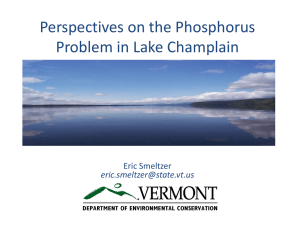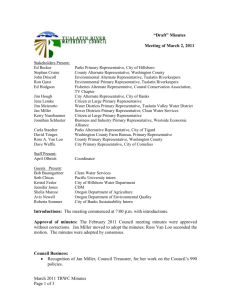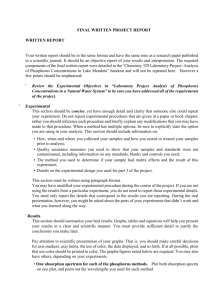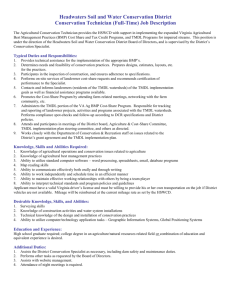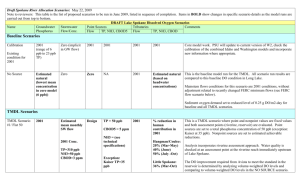Vermont Division of Agriculture Development on NativeEnergy
advertisement
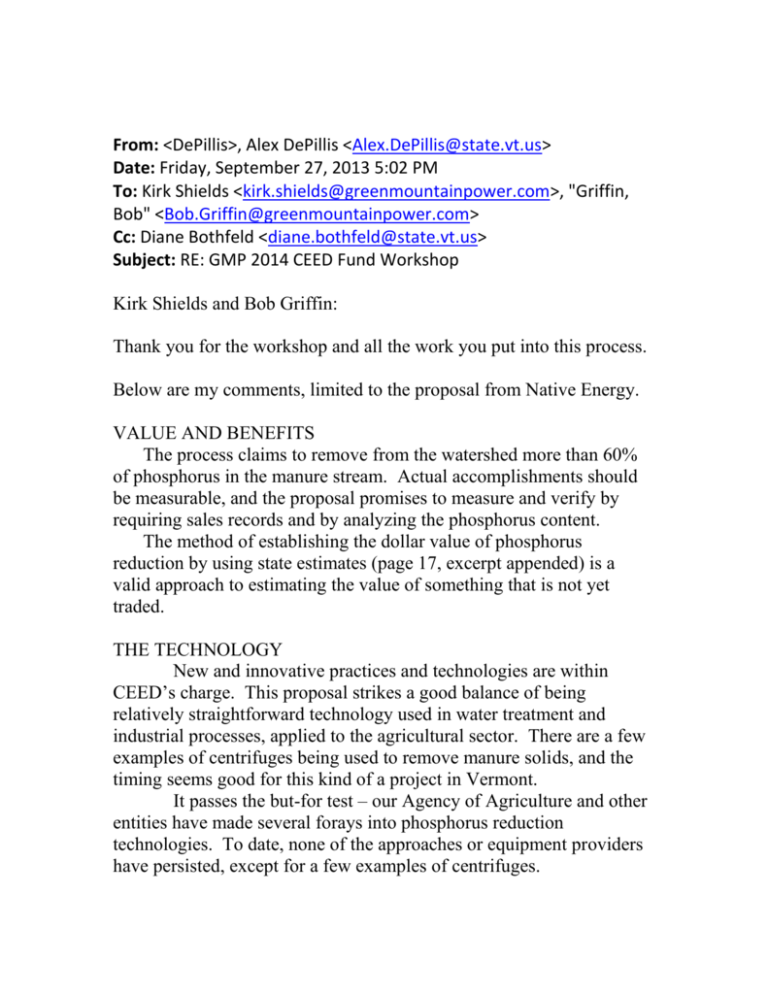
From: <DePillis>, Alex DePillis <Alex.DePillis@state.vt.us> Date: Friday, September 27, 2013 5:02 PM To: Kirk Shields <kirk.shields@greenmountainpower.com>, "Griffin, Bob" <Bob.Griffin@greenmountainpower.com> Cc: Diane Bothfeld <diane.bothfeld@state.vt.us> Subject: RE: GMP 2014 CEED Fund Workshop Kirk Shields and Bob Griffin: Thank you for the workshop and all the work you put into this process. Below are my comments, limited to the proposal from Native Energy. VALUE AND BENEFITS The process claims to remove from the watershed more than 60% of phosphorus in the manure stream. Actual accomplishments should be measurable, and the proposal promises to measure and verify by requiring sales records and by analyzing the phosphorus content. The method of establishing the dollar value of phosphorus reduction by using state estimates (page 17, excerpt appended) is a valid approach to estimating the value of something that is not yet traded. THE TECHNOLOGY New and innovative practices and technologies are within CEED’s charge. This proposal strikes a good balance of being relatively straightforward technology used in water treatment and industrial processes, applied to the agricultural sector. There are a few examples of centrifuges being used to remove manure solids, and the timing seems good for this kind of a project in Vermont. It passes the but-for test – our Agency of Agriculture and other entities have made several forays into phosphorus reduction technologies. To date, none of the approaches or equipment providers have persisted, except for a few examples of centrifuges. OTHER CONSIDERATIONS The follow-on work is important, especially targeting critical source areas with a screening tool, and adding this technology to existing and upcoming manure digester projects. Best regards, Alex Alexander DePillis Senior Agricultural Development Coordinator Division of Agricultural Development Vermont Agency of Agriculture, Food, and Markets (802) 505-3067 (cell and work) ===> In 2011, the USEPA reconsidered its approval of the TMDL, determined it did not comply with USEPA regulations, and withdrew its approval of the Vermont portion of the Lake Champlain Phosphorus TMDL. The original TMDL submission, among other things, established reduction targets for agricultural land-based NPS P pollution of the Lake, as well as budgets for mitigating this pollution by 2016. In total Vermont was allocated an agricultural reduction target for agricultural NPS P of 44.9 metric tonnes per year (99,000 lb/yr) and the State set forth a budget of $76 million <13> over the remaining 13 years of the period the reduction targets were to be achieved. On a present-value basis (2002 dollars), this reduction target and budget amounted to a cost of $667/lb/yr of P reduction. In its 2010 Revised Implementation Plan for Lake Champlain Phosphorus TMDL, the Vermont Agency of Natural Resources projected a cost range of $125 million - $175 million for addressing P reduction on agricultural lands. <14> ---------------<13> Note that this figure does not include additional expenditures that will likely have to be made by farmers to comply with P-related regulations and thus, this is a conservative estimate of the total societal costs for P mitigation. <14> See 2010 Revised Implementation Plan for Lake Champlain Phosphorus TMDL, available at: http://www.vtwaterquality.org/erp/docs/erp_revisedtmdl.pdf, pg 21.
